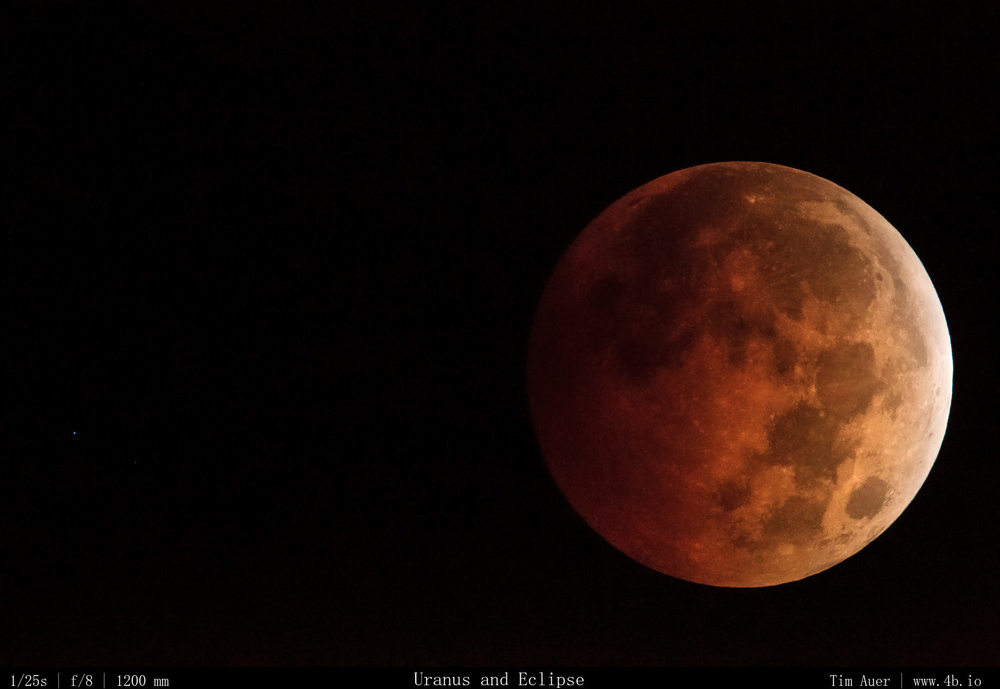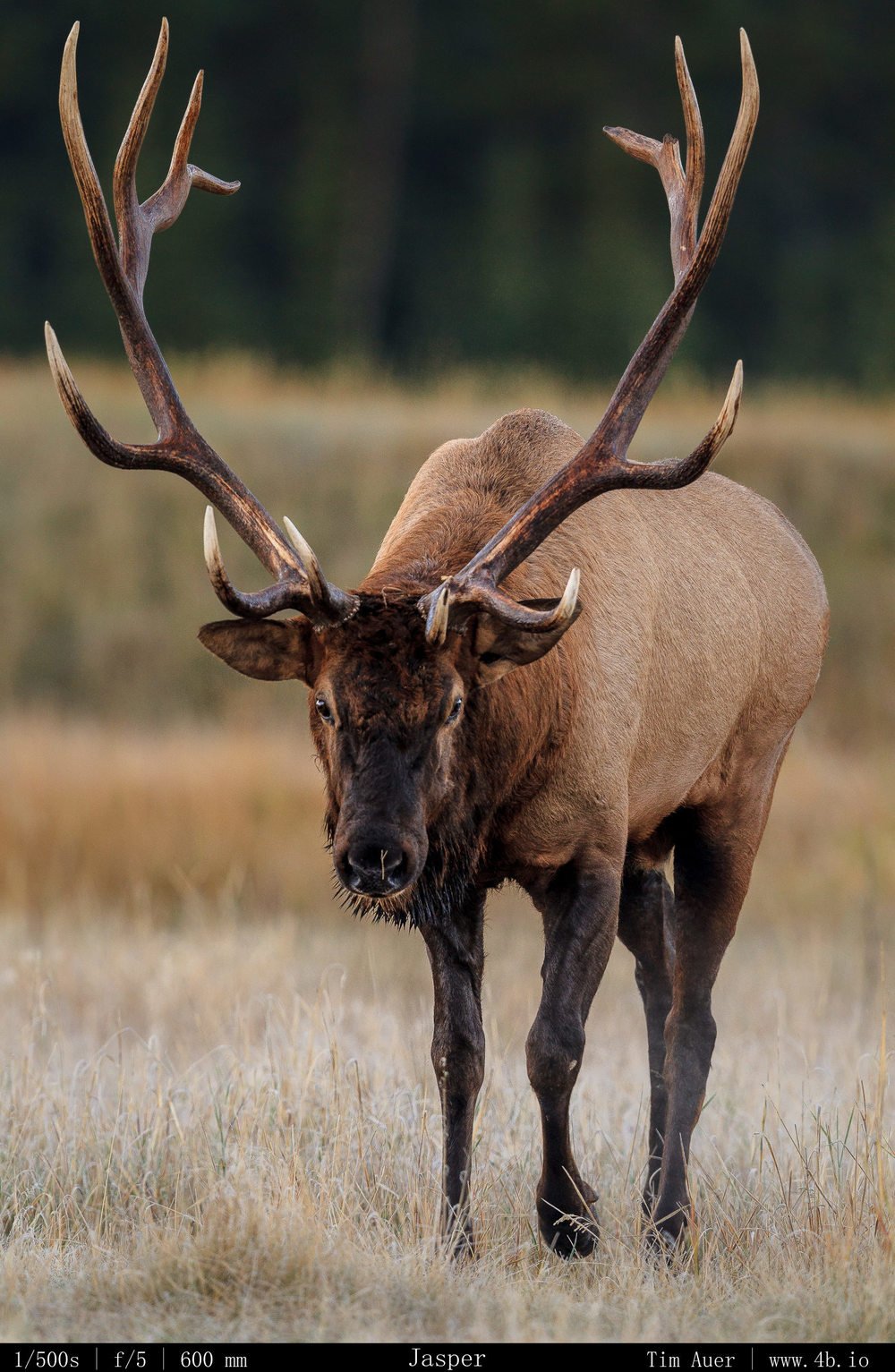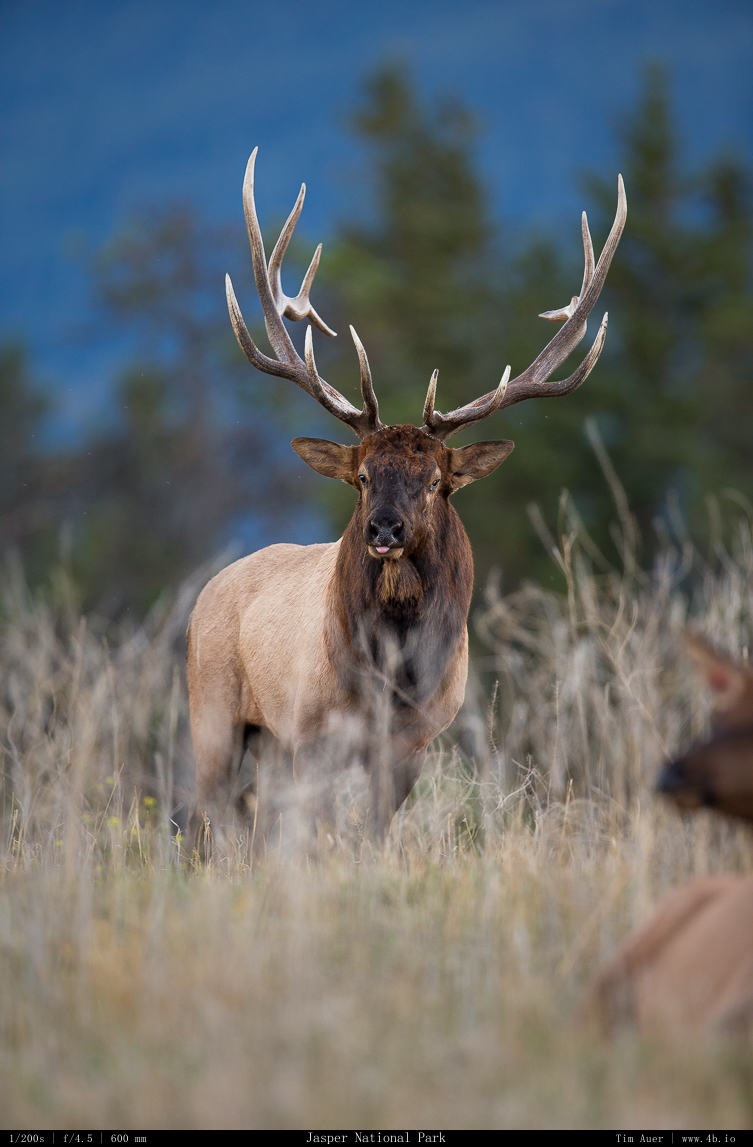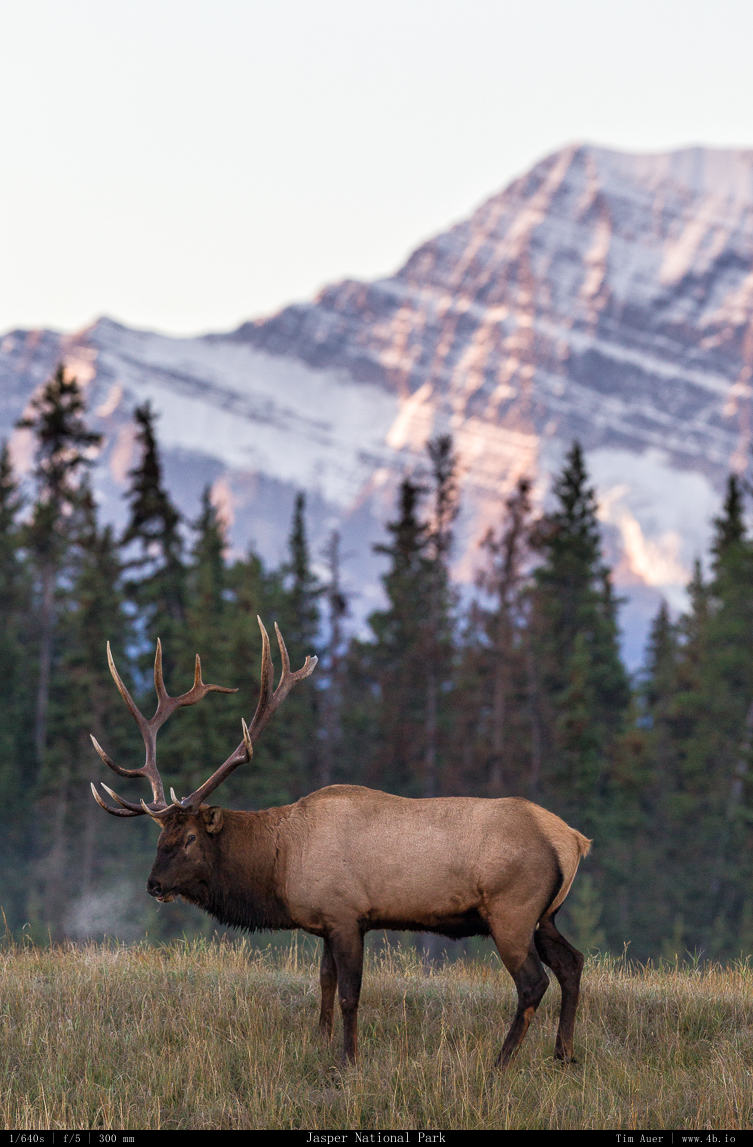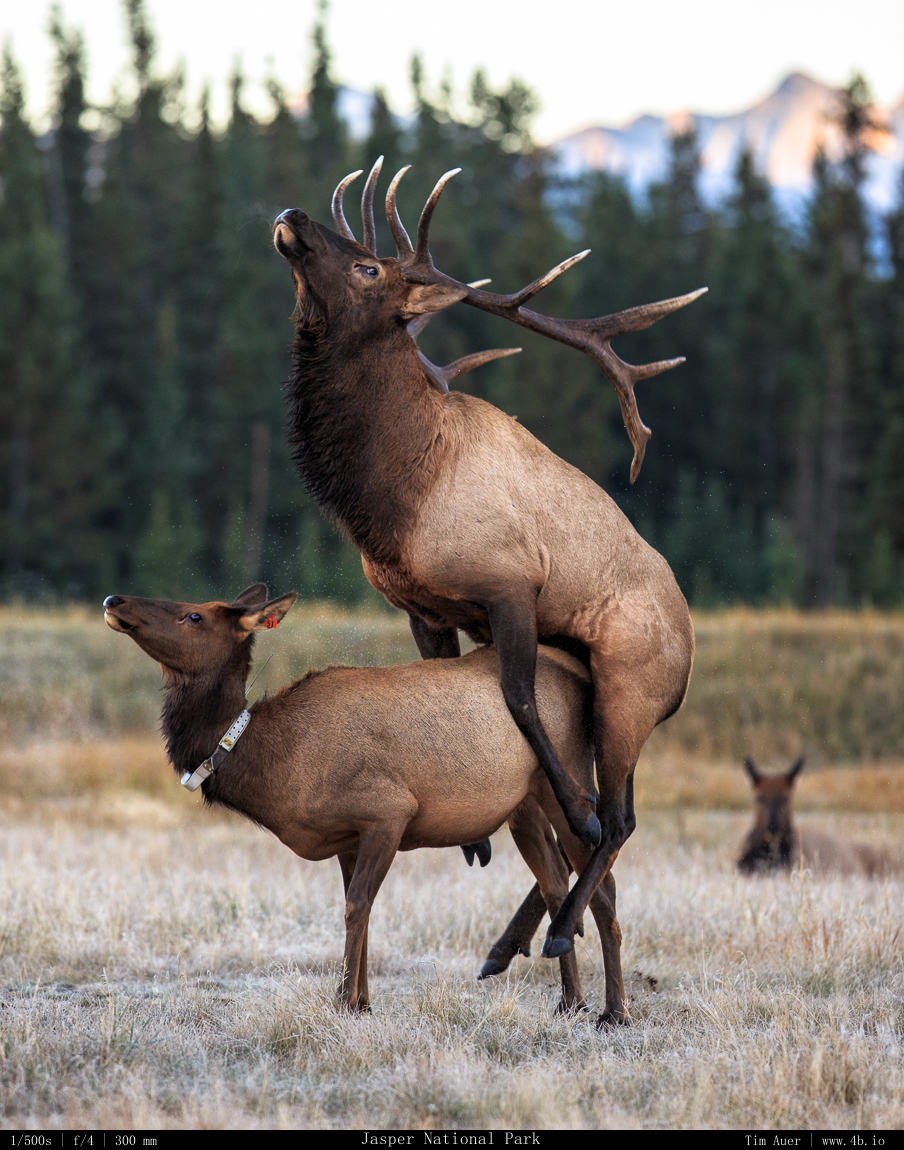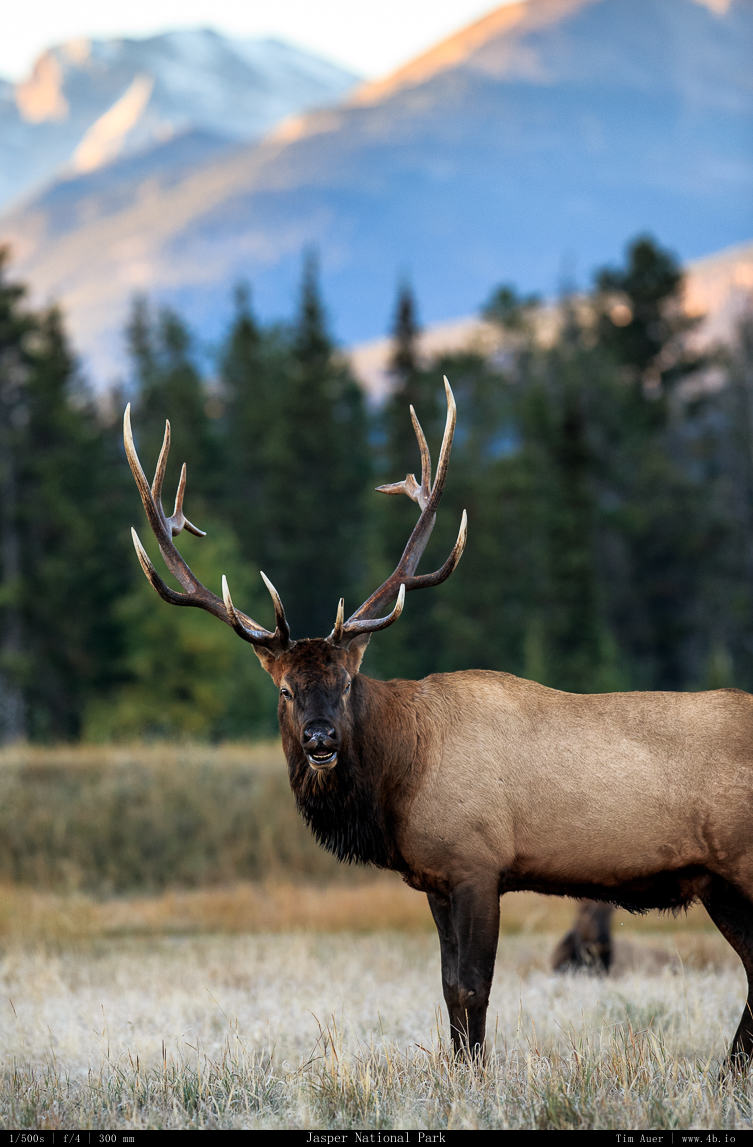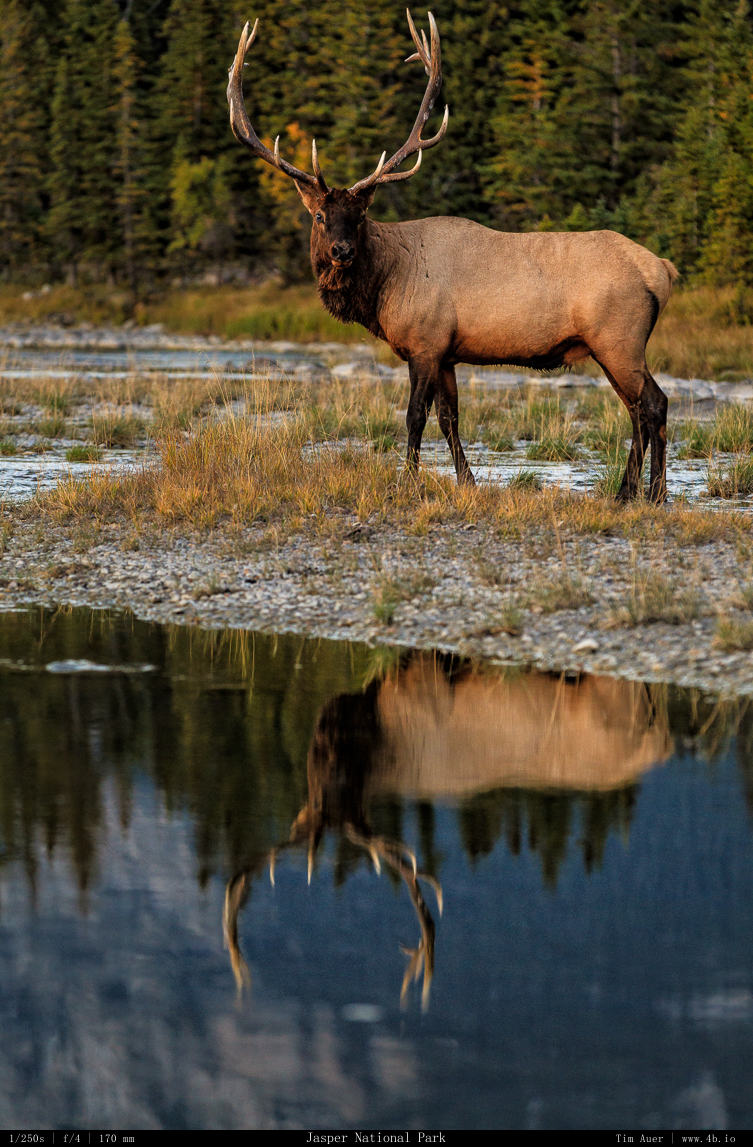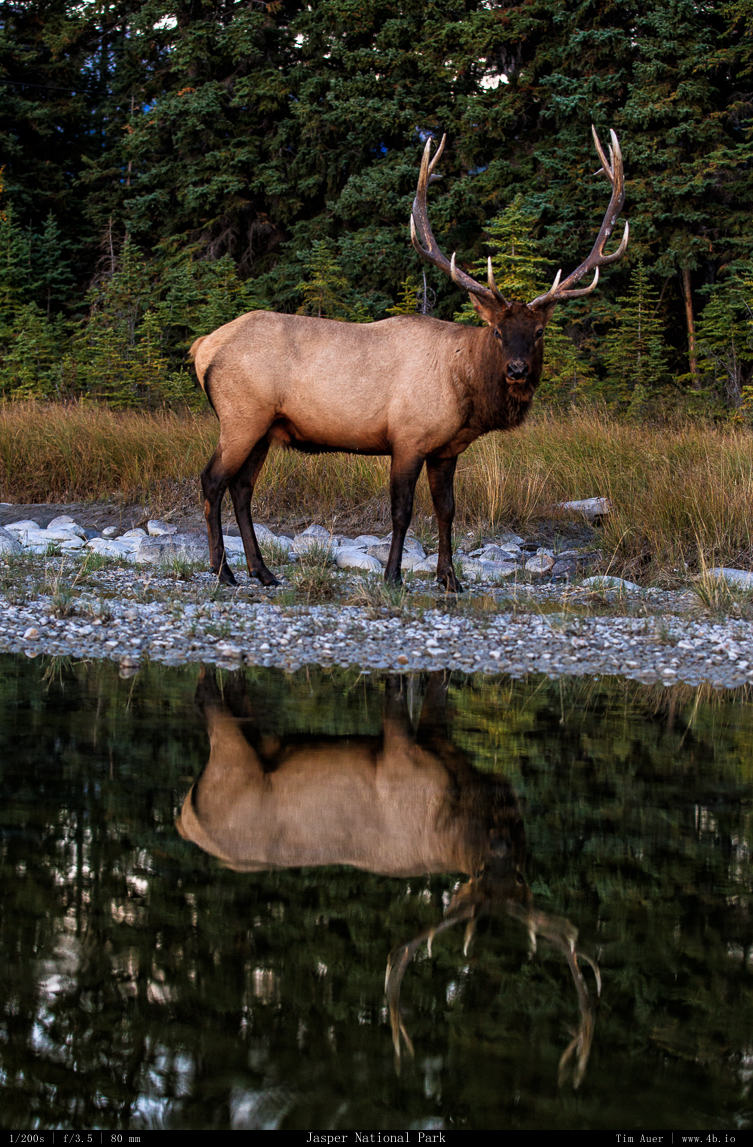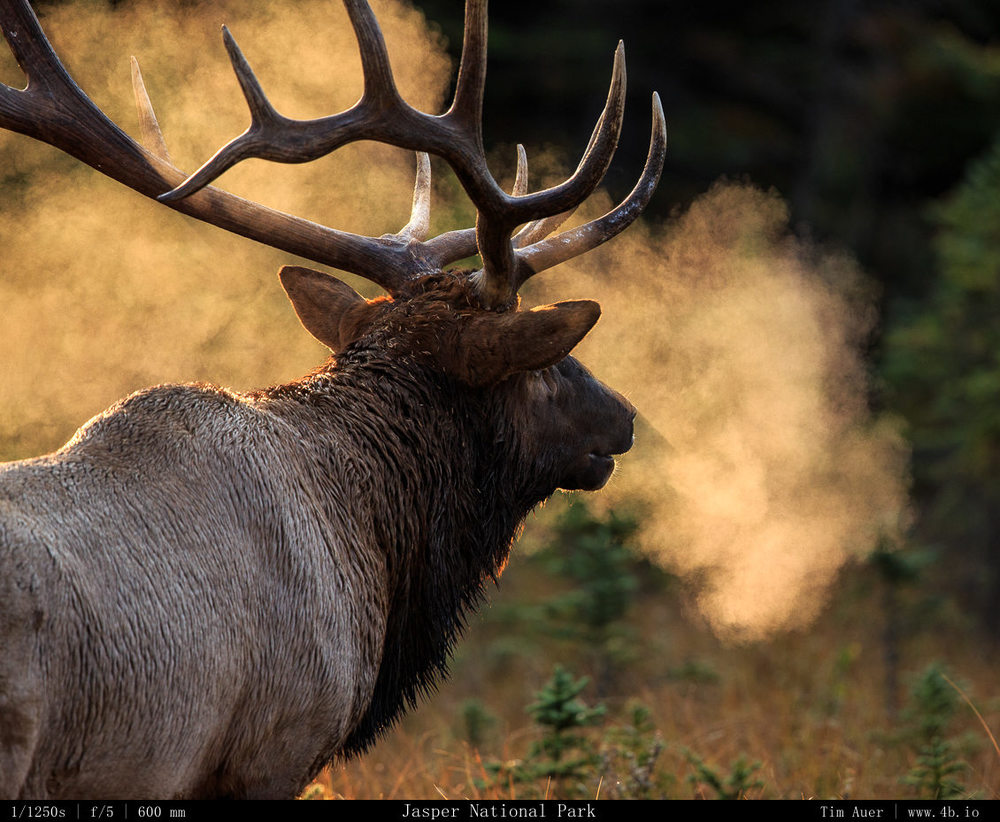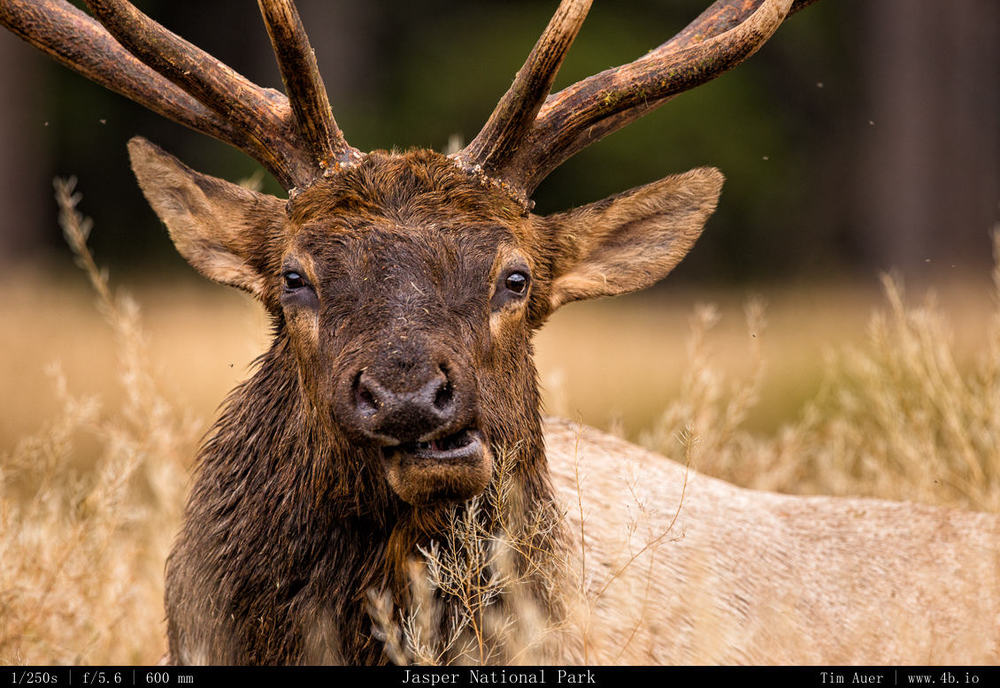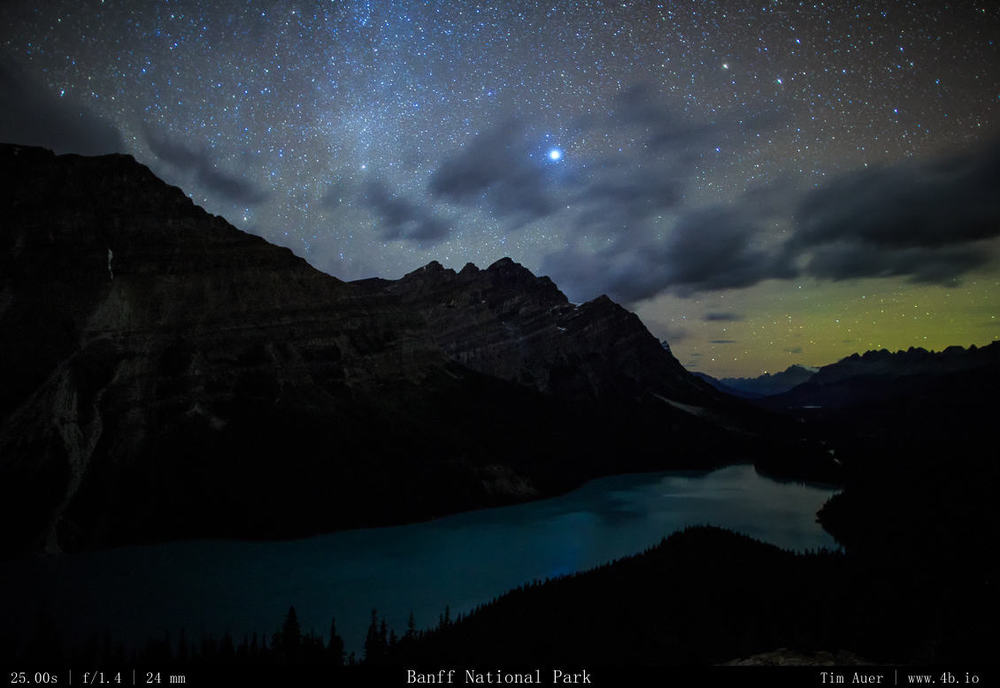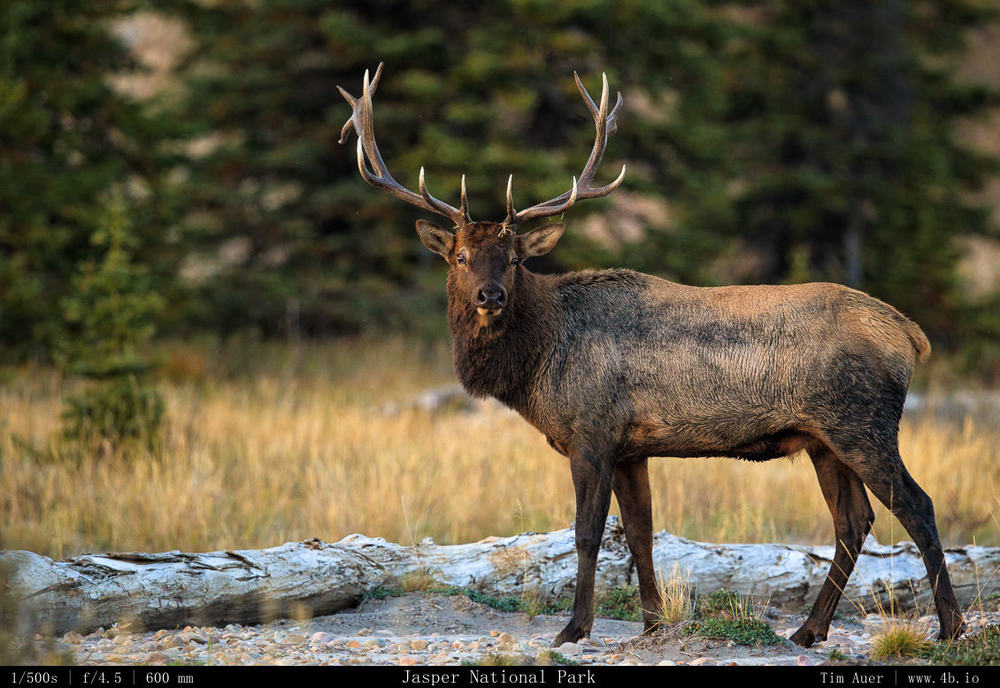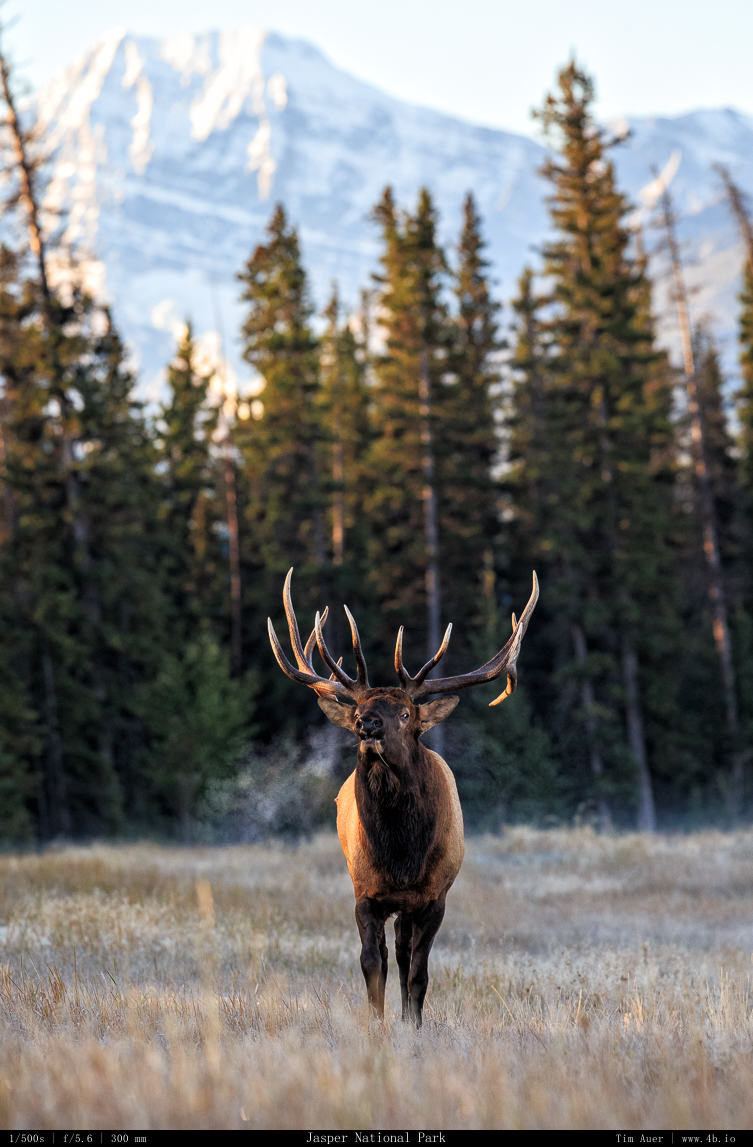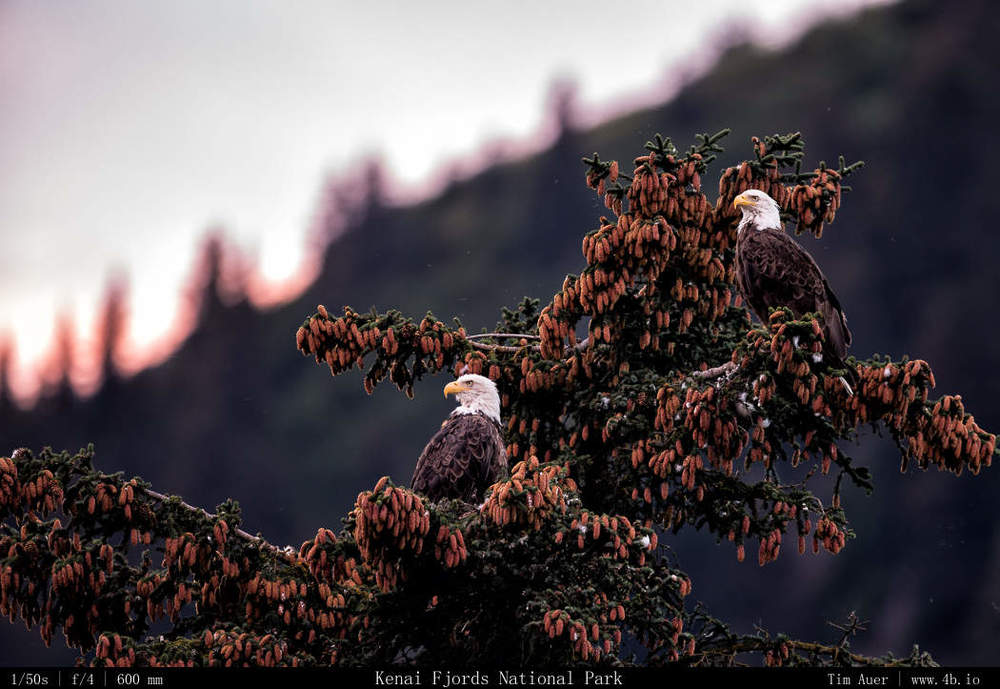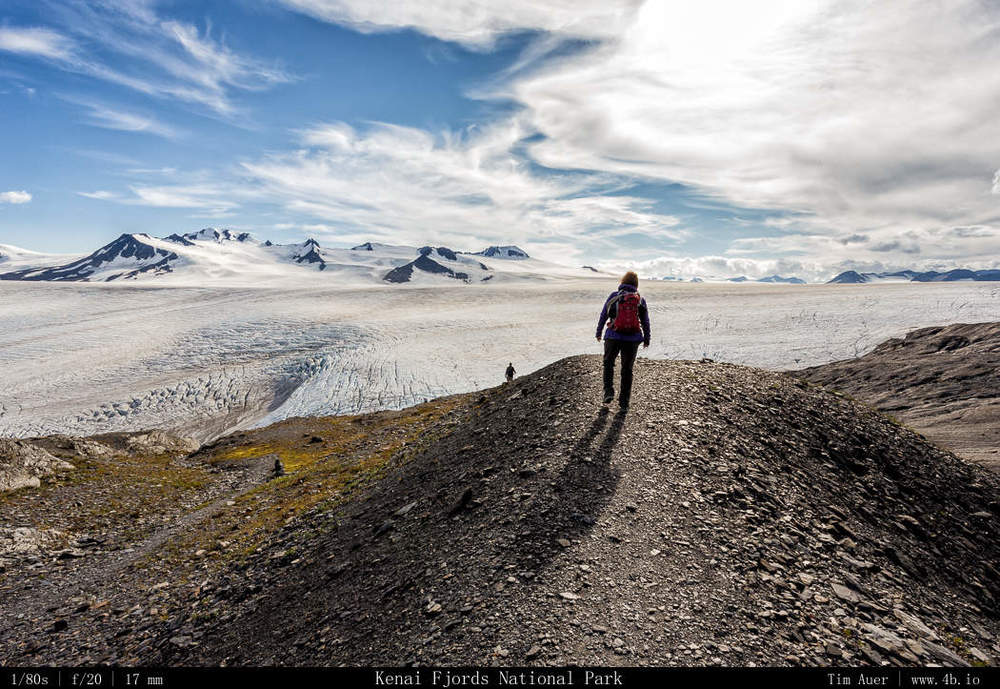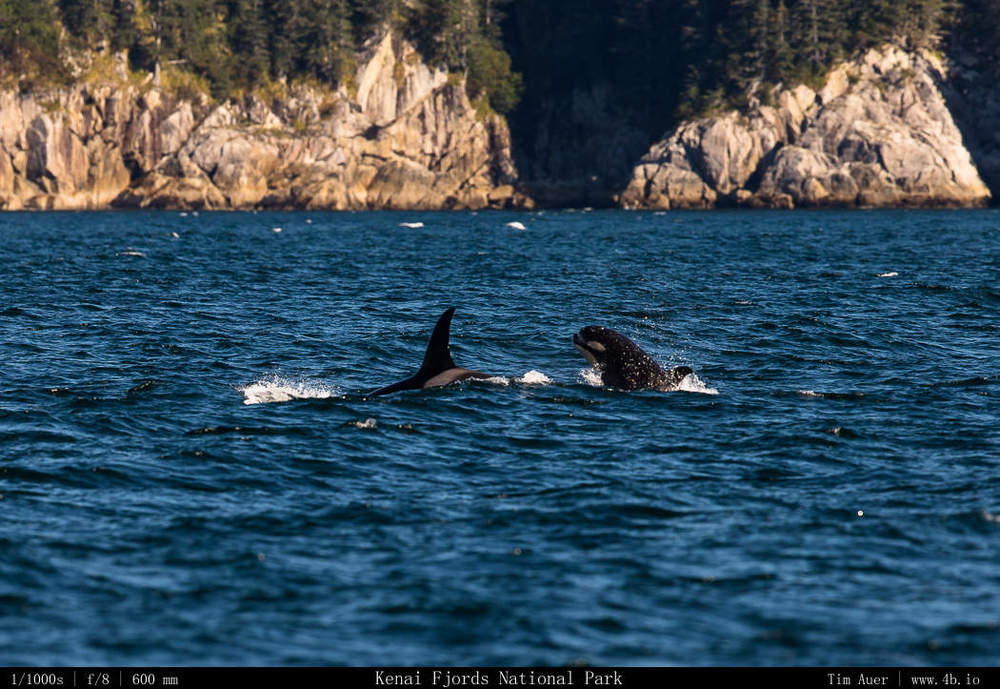The Elk
I arrived to Jasper at 9:30 the next morning, found a campsite in Whistlers, and met up with Joey and Sarah in the afternoon…and began to find some elk….
Out of all the days in Jasper, Sunday 9/21 was the most productive on all accounts. I saw and photographed my first “real” rutting action at the Lagoon at sunrise. Then at sunset, we were on a different bull along in the Athabasca River, near the Jasper Fairmont. Out in the flood zone, we were in the middle of it all, 3 or 4 competing satellite bulls bugled in various directions, near and far, agitating the alpha with the harem. He didn’t get lucky down by the river, but the light and action there was phenomenal. However, after calling it quits, as we walked back to our cars, we came upon this bull getting lucky with a cow on the lawn of the Jasper Fairmont Lodge. Two matings in one day, I was beginning to feel spoiled!
I can honestly say that photographing these hormonal elk may be equally as dangerous as bear photography. The fact that they are deer may lull you into a false sense of security. Its true that elk doesn’t have the teeth and claws to maul, but they are well equipped to rake and stomp. Joey’s advice on the matter was to always have an exit strategy when going in close, never leave yourself exposed.
This was sage advice. These hormonal beasts were fickle and prone to irrational spurts of sudden aggression. At one point while viewing a bull and his harem, the bull casually got closer to a group of us. We reacted immediately by increasing the space. On both sides of the bull’s path were stone piles, about 4m high with stones the size of basketballs. On my side, two of us scurried up one of the piles, while the man across the path scrambled up the other one. As the bull slowly passed us by, he suddenly charged at the other man, who fortunately still had room to scramble even higher.
In terms of photography, the conditions in the morning were better for moody shots with backlit smokey bugle vapor puffs. The evenings were better for dramatic and rich light, but no smoke breath. It was also much colder in the morning, around the freezing point, while the afternoons were still hot from the day’s heat.
People
Each wildlife trip has its own unique way bringing a variety of people together, and Jasper was no different. Wildlife is unpredictable, and it is the people involved that distinguish a good trip from a great one. As is often the case, wildlife photo trips are made special by the beautiful locale, wildlife and people that are there. When you have good people to chat and connect with during the lulls in action, I find the overall productivity will increase. And the people who participate in the Jasper Elk Rut may have the strongest sense of community that I have yet experienced. The crowd was a nice blend of full-time and retired professionals and semi-pros, skills ranging from beginner to expert, and and non-photographers alike. The collective knowledge of this group was impressive. Many were veterans of the Jasper elk rut, people who understood elk. Many of my most inquisitive questions were not only entertained, but graciously answered….which is not something that normally happens!














